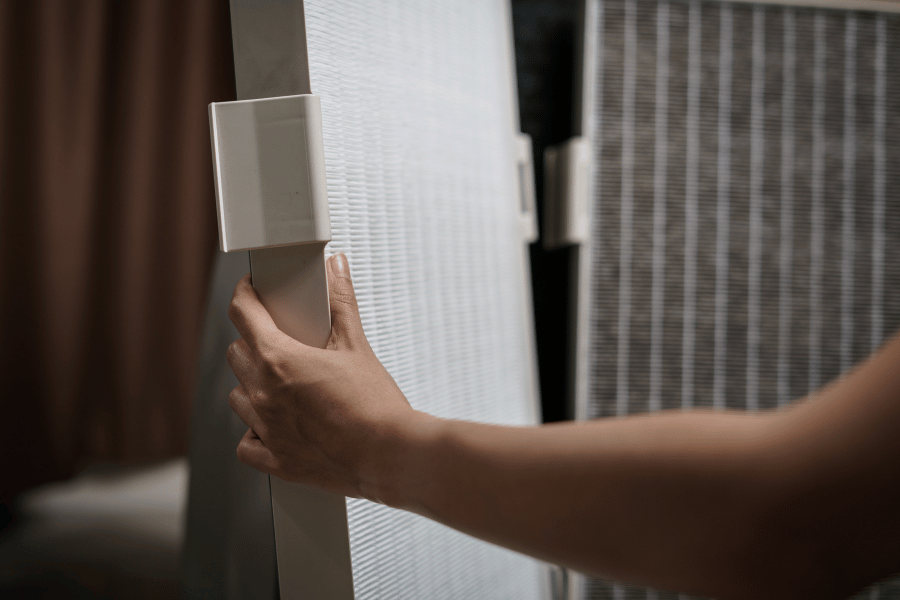In the world of home comfort, maintaining a healthy and efficient air conditioning and heating system is paramount. A key component to achieving this is understanding the different types of HVAC filters and knowing when it’s time for a change. HVAC filters not only ensure the air in your home stays clean but also play a crucial role in the efficiency and longevity of your system.

The Role of HVAC Filters
Before diving into the types of filters, it’s important to recognize the role they play in your home. HVAC filters trap and remove dust, pollen, pet dander, and other airborne particles, ensuring the air you breathe is clean. Additionally, they protect your HVAC system from dust buildup, which can lead to inefficiency or damage over time.
Types of HVAC Filters
There are several types of HVAC filters available, each with its unique benefits and maintenance schedules.
- Fiberglass Filters: These are the most basic and cost-effective option. Fiberglass filters are designed to protect your HVAC system from larger particles of dust and lint. However, they offer minimal air purification benefits, making them a less ideal choice for those with allergies or respiratory concerns. It’s recommended to change these filters every 30 days.
- Pleated Filters: Made from polyester fabrics or cotton folds, pleated filters offer a higher level of filtration than fiberglass options. They can capture smaller particles, such as mites and spores, improving indoor air quality. Pleated filters should be changed approximately every 90 days, although homes with pets or high dust levels may require more frequent changes.
- HEPA Filters: High-Efficiency Particulate Air (HEPA) filters are the gold standard in air filtration, capable of removing at least 99.97% of dust, pollen, mold, bacteria, and other airborne particles as small as 0.3 microns. These are particularly beneficial for individuals with allergies or asthma. HEPA filters have a longer lifespan but are more expensive. They typically need to be changed every 12 to 18 months, depending on the manufacturer’s recommendation and your home’s air quality.
- Washable Filters: As the name suggests, washable filters can be cleaned and reused. While they offer an eco-friendly and cost-effective solution over time, they require more maintenance. It’s important to clean these filters monthly and allow them to dry completely before reinstalling to prevent mold growth.
When to Change Your HVAC Filter
The frequency of filter changes can vary based on a number of factors, including the type of filter, your household’s air quality, and whether you have pets. Here are general guidelines to help you determine when to change your HVAC filters:
- Fiberglass Filters: Every 30 days
- Pleated Filters: Every 90 days
- HEPA Filters: Every 12 to 18 months
- Washable Filters: Clean monthly
However, if you have pets, suffer from allergies, or live in a high-dust area, you may need to change or clean your filters more frequently. A good rule of thumb is to check your filters monthly and change them if they appear dirty or clogged.
Conclusion
Understanding the different types of HVAC filters and their maintenance schedules is essential for homeowners looking to maintain a healthy, efficient home environment. By choosing the right filter for your needs and adhering to a regular maintenance schedule, you can improve your indoor air quality and extend the lifespan of your HVAC system. Remember, a small investment in the right filter can lead to significant long-term benefits for your home and health.
If you are experiencing a problem with your air conditioning or heating call us at 512-336-1431 to schedule an appointment. We’ll be glad to come out and take a look at the issue.
1431-183 A/C & Heating proudly serves Round Rock, Georgetown, Cedar Park, Pflugerville, Leander, Liberty Hill, and North Austin.
